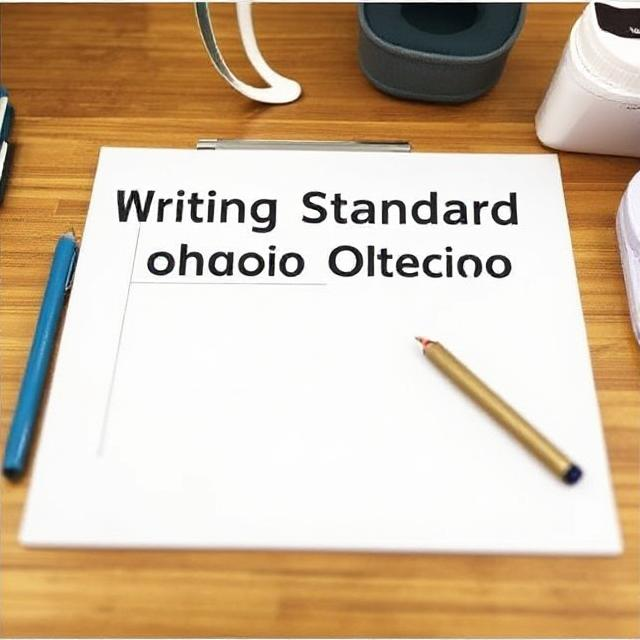
Standard Operating Procedures (SOPs) are crucial documents that outline how specific tasks and processes should be executed within an organization. They help ensure consistency, efficiency, and quality across operations, minimizing errors and promoting a standardized approach. This guide will walk you through the process of writing effective SOPs, from understanding their purpose to creating and implementing them.
What is a Standard Operating Procedure (SOP)?
A Standard Operating Procedure (SOP) is a written document that provides step-by-step instructions for carrying out a particular activity or process. SOPs are commonly used in industries such as healthcare, manufacturing, finance, hospitality, and IT, but they can be applied to any organization or business.
Why are SOPs Important?
- Consistency: Ensures tasks are performed the same way every time, regardless of who is executing them.
- Quality Control: Reduces errors and increases the quality of work.
- Training Tool: Serves as a resource for training new employees.
- Compliance: Helps organizations meet regulatory and legal requirements.
- Productivity: Streamlines operations, saving time and resources.
Types of SOPs
- Step-by-Step SOPs
- Provides detailed instructions in sequential order.
- Best for simple, routine tasks.
- Example: Instructions for logging into a company’s internal system.
- Hierarchical SOPs
- Combines detailed instructions with decision trees or flowcharts.
- Useful for processes with multiple possible outcomes.
- Example: Incident response procedures in IT security.
- Checklist SOPs
- Uses a checklist format to ensure all steps are completed.
- Ideal for processes that don’t require detailed explanations.
- Example: Pre-flight checklist for an airline pilot.
How to Write an SOP: Step-by-Step Guide
1. Identify the Purpose and Scope
- Define the goal of the SOP.
- Determine the target audience—who will use this SOP?
- Specify the process or task the SOP will cover.
2. Assemble a Team
- Involve subject matter experts (SMEs), team leaders, and stakeholders.
- Ensure the SOP reflects current best practices.
3. Gather Relevant Information
- Research the process thoroughly.
- Observe the task in action, interview employees, and review existing documentation.
4. Structure the SOP
A well-organized SOP typically includes the following sections:
- Title Page
- SOP Title
- SOP Number (for reference)
- Date of Issue and Revision
- Author(s) and Department
- Table of Contents (if the SOP is lengthy)
- Introduction
- Purpose
- Scope
- Definitions and Abbreviations
- Procedure
- Step-by-step instructions
- Use bullet points, numbered lists, or flowcharts for clarity.
- Include warnings, tips, and expected results where necessary.
- Roles and Responsibilities
- Specify who is responsible for each step or decision.
- References and Resources
- Include related documents, manuals, and reference materials.
- Revision History
- Track changes and updates for version control.
5. Use Clear and Concise Language
- Keep instructions simple and straightforward.
- Avoid jargon and overly technical terms unless necessary for the audience.
- Use active voice (e.g., “Open the file” instead of “The file should be opened”).
6. Add Visuals and Formatting
- Use diagrams, flowcharts, and images to enhance understanding.
- Ensure consistent formatting—headings, fonts, bullet points, and numbering should be uniform.
7. Test the SOP
- Conduct a trial run of the SOP with a small group.
- Gather feedback to identify any unclear steps or potential issues.
8. Review and Approve
- Have the SOP reviewed by managers, quality control teams, or relevant departments.
- Obtain formal approval before implementation.
9. Train and Distribute
- Train employees on how to use the SOP.
- Ensure the SOP is easily accessible—digitally or physically.
10. Update Regularly
- Review the SOP periodically to ensure it remains accurate and relevant.
- Update it in response to changes in processes, regulations, or technology.
Best Practices for Writing Effective SOPs
- Be Specific – Include only the necessary details, but be thorough enough that users can follow the procedure without additional guidance.
- Ensure Accuracy – Always verify that the steps align with actual operations.
- Keep it User-Friendly – Write with the end-user in mind, considering their level of expertise and familiarity with the process.
- Focus on Compliance – Ensure the SOP meets industry standards and regulatory requirements.
- Involve the Right People – Collaborate with those who execute the process daily to capture practical insights.
Common Mistakes to Avoid
- Overcomplicating the SOP – Keep it as simple as possible.
- Failing to Update Regularly – An outdated SOP can cause more harm than good.
- Ignoring End-User Feedback – Employees using the SOP daily are the best source of improvement ideas.
- Not Testing the SOP – Always test the SOP before implementation to avoid errors.
Writing Standard Operating Procedures is a key step in maintaining consistency, compliance, and quality within an organization. By following a structured approach and focusing on clarity and usability, you can create SOPs that help employees perform their tasks efficiently and effectively. Remember to review and update your SOPs regularly to keep them relevant and beneficial.

